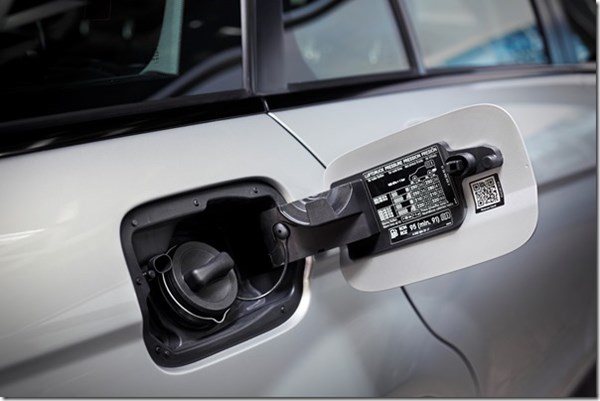Mercedes & the QR Code for Safety
Following on yesterday’s discussion of safety, here’s something that Mercedes-Benz has developed that is beneficial, credible, useful, and au courtant.
#regulations
Following on yesterday’s discussion of safety, here’s something that Mercedes-Benz has developed that is beneficial, credible, useful, and au courtant. It is providing QR code stickers that provides specific vehicle information for first responders.

In the event of an accident, the QR sticker code, which is fixed to the fuel filler flap on one side of a car and to the B-pillar of the other side, provides comprehensive information about the specific model, such as the location of the airbags, battery, and fuel tank—which is good to know when deploying hydraulic cutters on a car.

(Why on the B-pillar and fuel filler flap? Because accident investigators have determined that they provide (1) ready access and (2) both are rarely seriously damaged in an accident.)
While the QR code can be read by a smartphone or tablet with Internet access right now, Mercedes is developing an app that will allow the code to be read without an Internet connection; this is to be ready by the end of June.
Notably, Mercedes has waived its right to patent this technology, so it is available to all OEMs.
One of the consequences of the use of things like advanced high-strength steels is that the first responders have to take a new approach in terms of getting into a vehicle, as this video from the Steel Market Development Institute shows:
RELATED CONTENT
-
Bill on Self-Driving Cars Stalls in Senate
Congressional efforts to make it easier to develop self-driving cars in the U.S. have stalled in the Senate despite strong bipartisan support.
-
U.S. in No Hurry to Regulate Autonomous Vehicles
The National Highway Traffic Safety Administration says the emerging technology involved in self-driving cars is too new to be tightly regulated.
-
Toyota Finds a Mystery in Occupant Safety for Self-Driving Vehicles
Toyota Motor Co. says its study of how people in self-driving cars react to a near crash proves it will take far more research to improve the safety of occupants in such vehicles, Automotive News reports.


.jpg;width=70;height=70;mode=crop)